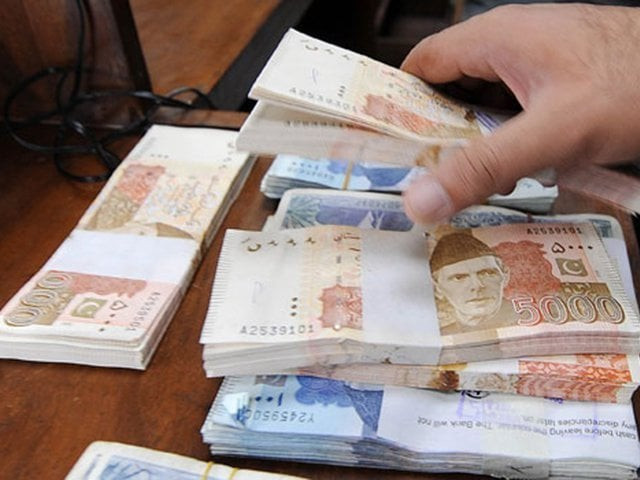
Statistics released by the State Bank of Pakistan (SBP) on Wednesday showed that in the last five years, the country’s total debt and liabilities increased Rs13.5 trillion or 82.8% to stand at Rs29.9 trillion. Five years ago, Pakistan’s total debt and liabilities were Rs16.4 trillion.
Pakistan’s external debt soars to record $91.8b
Of the Rs29.9 trillion, gross public debt, which is the direct responsibility of the government, stood at Rs25 trillion. It was equal to 72.5% of gross domestic product (GDP), far higher than the statutory limit of 60%, showed the statistics. The gross public debt grew Rs10.6 trillion or 74.5% in the past five years.
The main reason for the increase in the gross public debt was the PML-N government’s failure to contain expenditures and enhance tax-to-GDP ratio to a level that could have sustained the burden of additional expenditures.
It completely ignored reforms in the Federal Board of Revenue (FBR), struck compromises with influential lobbies and slowed down action against big tax evaders.
Total debt and liabilities also include the public sector enterprises’ (PSEs) debt, non-governmental external debt and inter-company external debt from direct investors abroad.
To service maturing debt, Pakistan to borrow Rs22 trillion in 2018-19
In the last fiscal year, Pakistan’s total debt and liabilities increased Rs4.8 trillion, showing growth of 18.9%, according to the SBP debt bulletin. Excluding liabilities, the country’s total debt swelled to Rs28.4 trillion, an increase of Rs12.9 trillion or 82.6% over the debt stock five years ago.
Government’s domestic debt surged to Rs16.4 trillion with an addition of Rs6.9 trillion in the past five years. There was a mushroom growth of 242% in PSEs’ debt in five years due to PML-N’s failure to reform government-owned entities. The PSEs’ debt, which was only Rs312 billion in 2013, increased dangerously to Rs1.1 trillion at the end of the last government’s term.
Most of the Rs1.1-trillion debt, which has not yet been covered in the budget, will eventually be financed by the taxpayers.
The country’s total external debt increased to a record Rs11 trillion by the end of fiscal year 2017-18, a net addition of Rs5.2 trillion in the past five years. The government’s external debt increased from Rs4.4 trillion to Rs7.8 trillion, according to the SBP.
Pakistan uses Chinese trade finance to repay foreign debt
The non-government external debt, which was Rs649 billion in 2013, increased to Rs1.9 trillion, showing a rise of Rs1.3 trillion. One of the main reasons for the increase in the non-government debt was the former finance minister Ishaq Dar’s decision to exclude certain categories of foreign debt from the definition of public debt.
The debt taken by Pakistan from the International Monetary Fund (IMF) also increased from Rs435 billion in 2013 to Rs741 billion at the end of last fiscal year.
The inter-company external debt increased from Rs308 billion to Rs473.4 billion in five years.
Due to the PML-N government’s policies of parking its direct obligations outside budget books, the liabilities, which are indirectly the responsibility of the finance ministry, also saw an increase of 85.4% in five years. From Rs778 billion in 2013, the total liabilities increased to Rs1.44 trillion by the end of previous fiscal year.
Domestic liabilities increased from Rs470 billion to Rs819 billion. External liabilities also doubled from Rs308 billion to Rs622 billion in five years. In 2013, the total liabilities were equal to 3.5% of GDP, which have now grown to 4.2% of GDP.
Owing to a massive increase in the debt stock, the country’s interest payments have also significantly increased, despite an overall low interest rate environment.
Interest payments on debt, which stood at Rs996 billion five years ago, increased to Rs1.6 trillion at the end of last fiscal year. The government paid Rs1.33 trillion in interest payments on domestic debt and Rs172.4 billion on external debt, which is quite a high figure.
The depreciation of the currency has also significantly increased the cost of external debt servicing.
Published in The Express Tribune, August 16th, 2018.
Like Business on Facebook, follow @TribuneBiz on Twitter to stay informed and join in the conversation.


















COMMENTS
Comments are moderated and generally will be posted if they are on-topic and not abusive.
For more information, please see our Comments FAQ